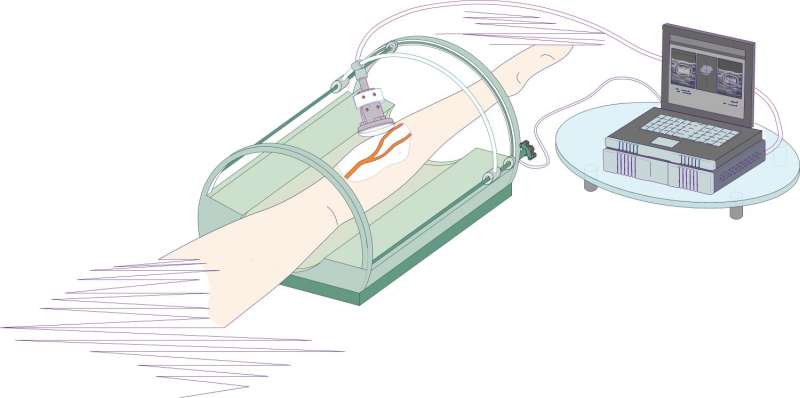Ultrasound technology for varicose treatment

Researchers from the the Great St. Petersburg Polytechnic University (SPbPU) and collaborators from industry have developed new technology for varicose vein obliteration treatment by the means of focused, high-intensity ultrasound.
According to the method developed in SPbPU, the patient's leg is placed into a container filled with with ultrasound-conducting liquid. The physician marks the areas on the screen of the device to subject to ultrasound. The program determines the required number of areas, and via compression cuffs, stops the blood flow if necessary, and then conducts the ultrasound irradiation procedure under physician's supervision.
The advantage of this technique is that it is noninvasive and does not damage the skin; it therefore does not require an operating room. Moreover, this is the first method combining both diagnostics and treatment of varicose veins.
Researchers plan to create an automated diagnostic ultrasound. It is expected that it will consist of two or more diagnostic modules, operating simultaneously to create a unified picture of the lower limbs venous network, thus significantly increasing the speed of the procedure.

















